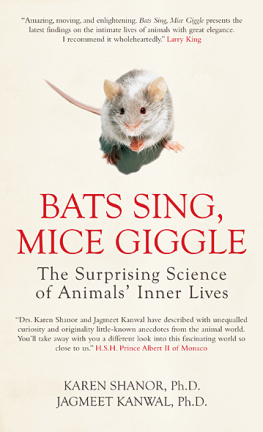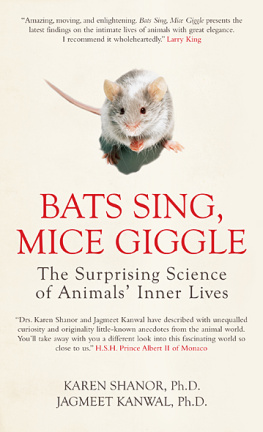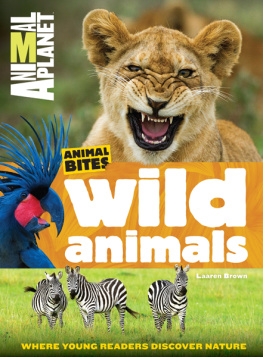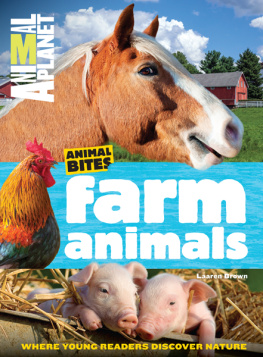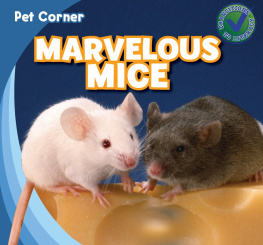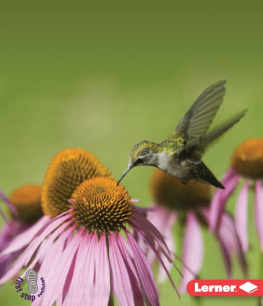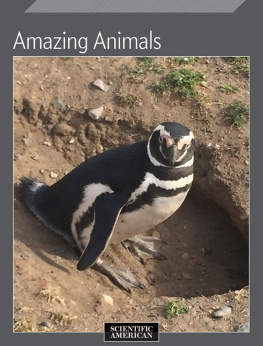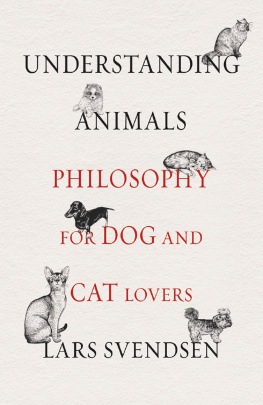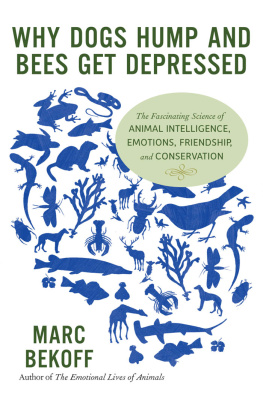
BATS SING, MICE GIGGLE
The Surprising Science of Animals Inner Lives
KAREN SHANOR, Ph.D.
JAGMEET KANWAL, Ph.D.

ICON BOOKS
Published in the UK in 2010 by
Icon Books Ltd, Omnibus Business Centre,
3941 North Road, London N7 9DP
email:
www.iconbooks.co.uk
This electronic edition published in 2010 by Icon Books
ISBN: 978-1-84831-226-5 (ePub format)
Printed edition (ISBN: 978-1-84831-197-8)
Text copyright 2009, 2010 Karen Shanor and Jagmeet Kanwal
The authors have asserted their moral rights.
No part of this book may be reproduced in any form, or by any means, without prior permission in writing from the publisher.
Typeset by Marie Doherty
Contents
Karen Shanor , Ph.D. is a neuropsychologist, a former White House consultant and an advisory member of Discovery Channel Global Education. At Stanford University, Dr. Shanor researched how rats learn, and how cats dream. Her work at NASAs Life Sciences department included animal research on memory and information theory, and she has taught with Dr. Karl Pribram at Georgetown University since 1998. As a Peace Corps science teacher in Somalia, she was a consultant for a wildlife conservatory. A frequent lecturer at the Smithsonian Institution, Dr. Shanor also hosted an NBC radio program for five years and appears frequently on Larry King Live , CBS Nightly News , Dateline , The Today Show and Oprah , and is a regular contributor to CNN.
Jagmeet Kanwal , Ph.D. is Associate Professor in the Department of Physiology and Biophysics and the Department of Psychology at Georgetown University. He is also External Professor at the Krasnow Institute for Advanced Study in Fairfax, Virginia. Dr. Kanwal is an internationally recognized neuroethologist who was the first to perform magnetic resonance imaging in awake animals. He is an expert on cortical mechanisms for the perception of complex sounds. Dr. Kanwal discovered a left-brain dominance for species-specific calls in bats. His laboratory is engaged in cracking the code for the neural representation of social calls within and between the two cerebral hemispheres and in the amygdala. Dr. Kanwals early contributions on the comparative organization of chemosensory systems include the discovery of taste centers in the forebrain of fish. He uses interdisciplinary approaches to understand the functional organization of the brain from the viewpoint of behavior. He is also an ardent birdwatcher and keen nature photographer.
Both authors live in the Washington, DC area.
Acknowledgments
First and foremost, we are grateful to Icon editor Simon Flynn and his extraordinary group, especially Nick Sidwell, Andrew Furlow, Duncan Heath and Najma Finlay, who labored with patience night and day across multiple time zones to produce a book with cutting-edge science. Their understanding and skill in coordinating the tasks that needed to be performed at various stages of the production were outstanding. We thank our agents, Muriel Nellis and especially Jane Roberts of the Literary and Creative Artists, Inc. for their expertise and constant support in this endeavor. Janes immense enthusiasm and literary wisdom kept us feeling optimistic about completing the book during difficult times. She was always there for us when we needed a quick second opinion or a readers perspective. On the academic side, we are deeply indebted to Karl Pribram, who at the age of 91 continues to be a great source of inspiration. His engaging lectures and stimulating discussions at Georgetown University provided an intellectual forum for many thoughtful interactions between the authors. We are also thankful to Georgetown Professor Patrick Heelan for his guidance on the quantum physics and seismological concepts alluded to in this book. John Caprio, Thomas Finger and Nobuo Suga also have been scientific mentors whose interesting research has contributed to some of the findings reported in this book.
Marine biologist Robert Woollacott of Cambridge, Massachusetts, Ken Ferebee of the US National Park Service, Stuart Brown, author of the book Play , mathematician James Shanor, theoretical physicist Sarbmeet Kanwal, geologist Gordy Shanor, and David Wood of the Sidwell Friends science program all shared their professional expertise that helped to improve earlier drafts of the manuscript. We also thank Ian Hay Falconer and Constance Culler Falconer for their literary research, and Daniel Perry and Maxinder Kanwal for their critical input to the manuscript. Walt Ellison provided his invaluable computer expertise to keep our communication lines buzzing across the two continents.
We also want to acknowledge Srimati Kamala, Nancy Bugos, Judith Millon, Goldia and John Hodgdon, John Wusteman, Muthiah Veerappan, Niranjan M. Shah, Madhav Singh Parihar, Vera Andreeva, Gregory and Laurie Wood, and Jessleen and Mini Kanwal for their interest and constant support that helped in getting this book finished.
To all of our pets and the wildlife around us that inspired this book. And to our parents who encouraged us to indulge in and pursue our interests.
Introduction
Where Are All the Dead Animals, Sri Lanka Asks Wildlife officials are stunnedthe worst tsunami in memory has killed around 22,000 people along the Indian Ocean islands coast, but they cant find any dead animals. Giant waves washed floodwaters up to 2 miles inland at Yala National Park in the ravaged southeast, Sri Lankas biggest wildlife reserve and home to hundreds of wild elephants and several leopards. The strange thing is we havent recorded any dead animals, H.D. Ratnayake, deputy director of the National Wildlife Department, told Reuters Wednesday. No elephants are dead, not even a dead hare or rabbit, he added. I think animals can sense disaster. Reuters, Sri Lanka (December 29, 2004)
What did the animals know that humans didnt? What alarms were sent out that humans didnt hear? As the Industrial Revolution and the development of urban centers moved us from nature and the land to the promise of science and technology, we detached ourselves from the understanding of the animal world. Twentieth-century scientific practices placed humans on a pedestal of superiority, further separating us from our natural roots and surroundings. Now, science is beginning to take us back to nature, providing a window into the minds of other species.
This book represents the coming together of two individuals with quite different backgroundsa neuropsychologist and a neuroethologistbut with a common interest in the wonderful and secret lives of animals. Although the essence of this book was brewing in our psyches for most of our lives, it came as a compelling and timely surprise. Here, we provide a unique perspective on how to better understand the animal world and in so doing gain a better understanding of our own worldthe inner world of our minds and the outer world that we share with all other creatures as our only home.
Bats sing, mice giggle
In a kapok tree growing in the tropical heat of a forest in Peru hangs a small male bat that has tiny sacs under each of his wings. Nine females surround him, each carrying a strong smell of a secretion that exudes from the sacs. The sacwinged bat feeds on tiny insects and interrupts its solitary existence to engage in reproductive activities. Intriguingly, pups of the species were discovered recently to babble. Four- to eight-week-old bat pups make long strings of barks, chatters and screeches that represent jumbled-up adult-like calls. Scientists now know that bats, like some primates and birds, babble as babies; and the ability to babble can even be accompanied by giggling. Not only do human infants babble and giggle as they experience feelings and try out their audiovocal abilities, so do babies of other species. New and sophisticated technology is taking our understanding into the secret world of animals where we can detect first-hand bats that do indeed sing and mice that really do giggle.
Next page
